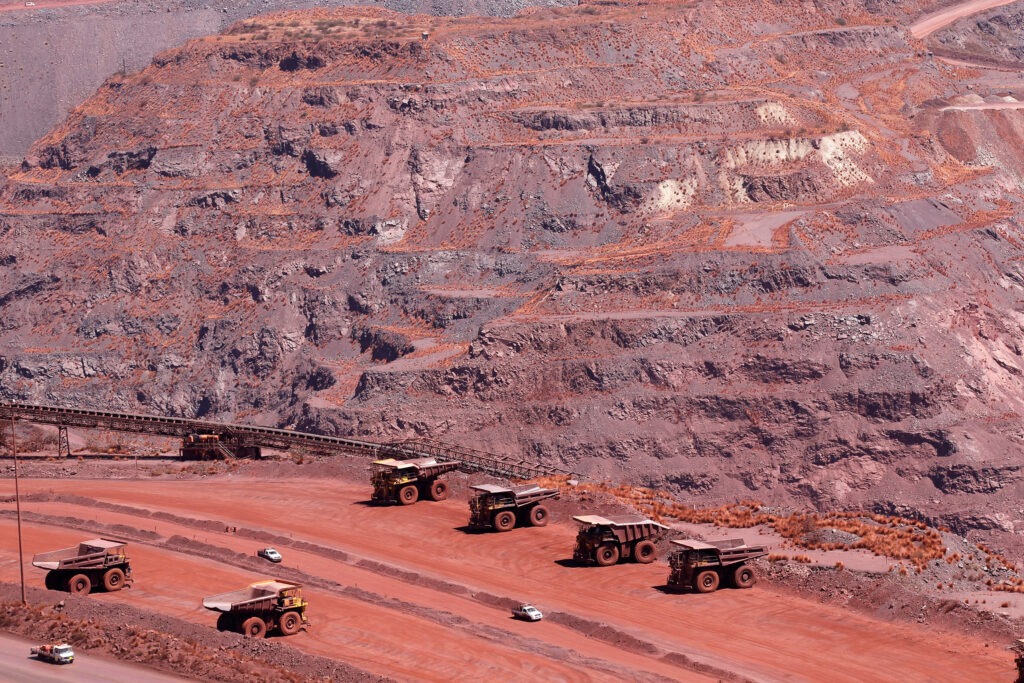
When extracting iron ore from a mine, it must go through several processing stages.
Six steps to process iron ore:
- Screening
Start by screening the iron ore to separate fine particles below the crusher’s CSS before crushing. Use a static screen to divert the fine particles for crushing. This step prevents overloading the crusher and improves its efficiency.
Fine particles decrease crusher efficiency and increase power draft for crushing small particles, resulting in higher kWhr per ton crushed. Screening and diverting fine particles significantly enhance crusher performance.
- Crushing and stockpiling
Break up the iron ore to obtain an F 80 grind size before grinding can occur. Once crushed, divert it to a stockpile. The aim is to ensure smooth crushing and minimize downtime in case of breakdown or planned maintenance without interrupting grinding or subsequent steps. Crusher failure can impact factory performance. - Feeding the crusher (Reclaim)
The surge pile allows continuous material supply into the mill, ensuring consistent results and stability during ore recovery. - Grinding
The primary grinding mill grinds material prior to spiral gravity separation. Efficient grinding minimizes recirculation from cyclone clusters or screening after milling, reducing kWhr per ton ground.
This step involves retaining material inside the mill for a specific time (with or without grinding balls), calculated using Bond’s work index considering factors like ore hardness, feed size, mill speed, recirculation rate, desired fineness, etc. After leaving the mill, cyclones or vibrating screens classify the iron ore by separating fine and large particles; large ones return to the crusher while fines undergo spiral gravity separation.
5.Spiral gravity separation
Gravity separation operates at approximately 30% solid concentration with process water assistance.The heaviest particles are separated from finer ones through centrifugal force.A collector at each spiral’s bottom collects heavy concentrate(hematite concentrate)and removes lighter unwanted middlings/tails.This step is repeated two or three times based on desired liberation and iron concentration.
- Magnetic separation
The concentrate obtained from middlings/tails after spiral gravity separation has lower iron concentration(magnetite), requiring further concentration to achieve customer’s 65% Fe concentration.It is immediately directed to a magnetic separator circuit.Magnetized drums collect magnetic material for further concentration(magnetite iron minerals content).Lighter particles separated during spiral gravity separation are formed into balls(combined with bentonite or similar binding agent)and cooked in an induction oven, known as pelletization.Rejected non-magnetized material goes to the residue disposal area(tailing).
Depending on particle hardness/size and crushing results, there may be multiple crushing, grinding, and mineral separation stages.
Our best advice at Multotec is to use products specifically designed for iron processing and familiarize yourself with your machines. Our team of experts can assist you with any questions regarding cyclones, spirals, drums, samplers, and provide support throughout the stages of iron ore processing.


